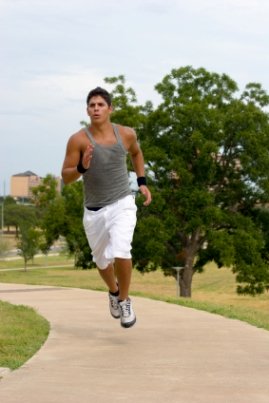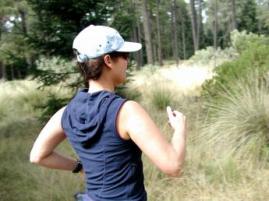- Newsletter|
- What's New |
- About|
- Contact|
Like this site:
|
Home What's New? Newsletter |
BeginnersBeginnersWeight Loss Beginner Run Programs |
Training & ToolsTrainingTips Calculators Injuries |
Race Distances5K10K Marathon |
...And Other Things...QuizBooks Questions Quotes |
[?] Subscribe To This Site
Your Guide to Running Stress FracturesYour feet, ankles and legs are prone to stress fractures if you run on a regular basis. Runners are apt to get these stress fractures. You will learn all about stress fractures in runners in this article. What is a stress fracture ?
A stress fracture is the result of overuse of the bones in your legs, ankles and feet. A regular break usually happens because of a fall or some kind of accident, but a stress fracture is a broken bone that happens because there is a lot of stress on your bones when you are a runner. You might not feel it coming at all, because the stress on your bones happen over a certain period of time with a little bit of stress until your bones finally cant take it anymore and one finally breaks. Stress fractures in runners mostly occur in the feet, ankles, shins, and other parts of your legs. How do you get a stress fracture as a runner ?The bones you use while running are constantly changing to adapt to what you are using them for in this case, running. As you run your bones will always try to get stronger so they can get used to the impacts they are feeling as a result of running.A stress fracture could occur because you increase the difficulty of your running routine in a small period of time, e.g. you add too much mileage, you do too much hill running or you change to much more difficult terrain. Your bones may not be able to keep up with the changes, and break as a result. You could also get a stress fracture because your diet is not up to par for the running you are doing. How do you heal a stress fracture ?
You should see your medical professional or go to a local emergency room if you experience a stress fracture. You will probably have to use crutches for a while and avoid any activities that could hurt the bone. You will need to rest for a while and allow the bone to heal. You can begin more activity when your medical professional recommends that it is all right to do so, but you will need to do this carefully and gradually so you can get back to being your usual self in a healthy way. How do you prevent a stress fracture ?To prevent a possible stress fracture try not to increase the routine and difficulty of your running in a short period of time. If you want to increase your running skills do it gradually over time to allow your bones to adjust to the activities and impact it is feeling.You should also make sure that your diet allows you to do the running you want to. For example, you need more of everything than someone who does not exercise on a regular basis does. Make sure you are getting enough nutrients, calcium, protein, calories, vitamins, minerals, etc. This will do its own little bit in preventing stress fractures. Read about other overuse injuries like Achilles tendinitis or shin splints. To prevent nasty injuries, always make sure you conservatively add mileage to your running program or take advice from professional running coaches. Not necessarily personally ! I have the comfort of always having the best running coach in the world in my vicinity ! Wish to learn more about running ? Subscribe to the Best Running Tips Newsletter or to my site blog. Go from Running Stress Fractures Page to Running Injuries Page Go from Running Stress Fractures Page to Best Running Tips Homepage Running Injuries Running Injury Prevention Foot Injuries: Foot Pain | Black Toenail | Stress Fractures | Posterior Tibial Tendonitis | Heel Injuries: Heel Pain | Achilles Tendinitis | Heel Spur / Plantar Fasciitis | Knee Injuries: Knee Pain | Iliotibial Band Syndrome (ITB) | Leg Injuries: Leg / Calf Cramps | Shin Splints | Hamstring Injury | Hip Pain Upper Body Injuries: Nipple Chafing | Side Stitch | Back Pain | Chest Pain Like this page: |
|

|

|

|
|





